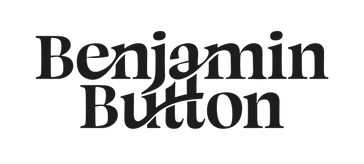Understanding the Importance of Proper Thawing and Reheating
When it comes to caring for your baby, ensuring that breast milk is handled safely is of utmost importance. The methods you choose for thawing and reheating breast milk can affect its quality and nutritional value. By mastering these techniques, you can provide your little one with nourishing milk while maintaining safety standards that are essential for their health.Thawing Breast Milk Safely
Proper thawing is critical to preserving the nutritional integrity of breast milk. Here are the recommended methods:1. Refrigerator Thawing
Thawing breast milk in the refrigerator is the safest method.- Place the frozen breast milk container in the refrigerator.
- Allow about 24 hours for it to thaw completely.
- This method maintains a stable temperature, reducing the risk of bacterial growth.
2. Warm Water Bath
This method is faster, but it must be done correctly.- Fill a bowl or basin with warm water.
- Submerge the sealed container of breast milk in the water.
- Ensure the water is warm, not boiling, to prevent the milk from overheating.
- Swirl the container gently for even thawing.
3. Running Water Method
Thawing breast milk under running water can be effective if done right.- Hold the sealed container under warm running water.
- Make sure the temperature is comfortable and not scorching.
- This should be done in a short time frame, as prolonged exposure can be unsafe.
Reheating Breast Milk Correctly
After thawing, reheating should also be approached with caution. Here are some expert tips:1. Avoid the Microwave
This is one of the most important rules to follow.- Never use a microwave to heat breast milk.
- Microwaving can create hot spots, leading to burns.
- It can also destroy essential nutrients in the milk.
2. Use a Bottle Warmer
If you have one, a bottle warmer is an excellent option.- Read the manufacturer's instructions for appropriate settings.
- These devices gently heat milk without causing nutrient loss.
- Always check the temperature before feeding your baby.
3. Warm Water Bath
Just as with thawing, a warm water bath can be effective for reheating.- Fill a bowl with warm water and place the container of breast milk in it.
- Allow it to sit until it reaches the desired temperature.
- Monitor the temperature to ensure it suits your baby's needs.
Storing Thawed and Reheated Breast Milk
Understanding how to store breast milk after it has been thawed or reheated can prevent spoilage and ensure safety.1. Time Limits for Thawed Breast Milk
Once breast milk is thawed, it should be consumed within:- 24 hours if thawed in the refrigerator.
- 2 hours if thawed using the warm water method or running water.
2. Reheated Milk Storage
Once milk has been reheated, the window for safe consumption narrows significantly.- Reheated breast milk should be consumed immediately.
- If not used, it should be discarded within the hour.
Tips for Ensuring Safety
Taking extra steps to guarantee the safety of breast milk is essential, as we can never be too careful. Here are some additional tips:- Always label containers with the date and time when milk was expressed and frozen.
- Avoid refreezing any breast milk that has been thawed.
- Regularly clean and sanitise bottles and storage equipment.
The Benefits of Safe Handling
Following these expert tips for thawing and reheating breast milk provides numerous advantages:- Maintaining the nutritional quality of breastfeeding.
- Preventing any potential health risks due to improper handling.
- Providing peace of mind to mothers concerning the safety of their babies.





















